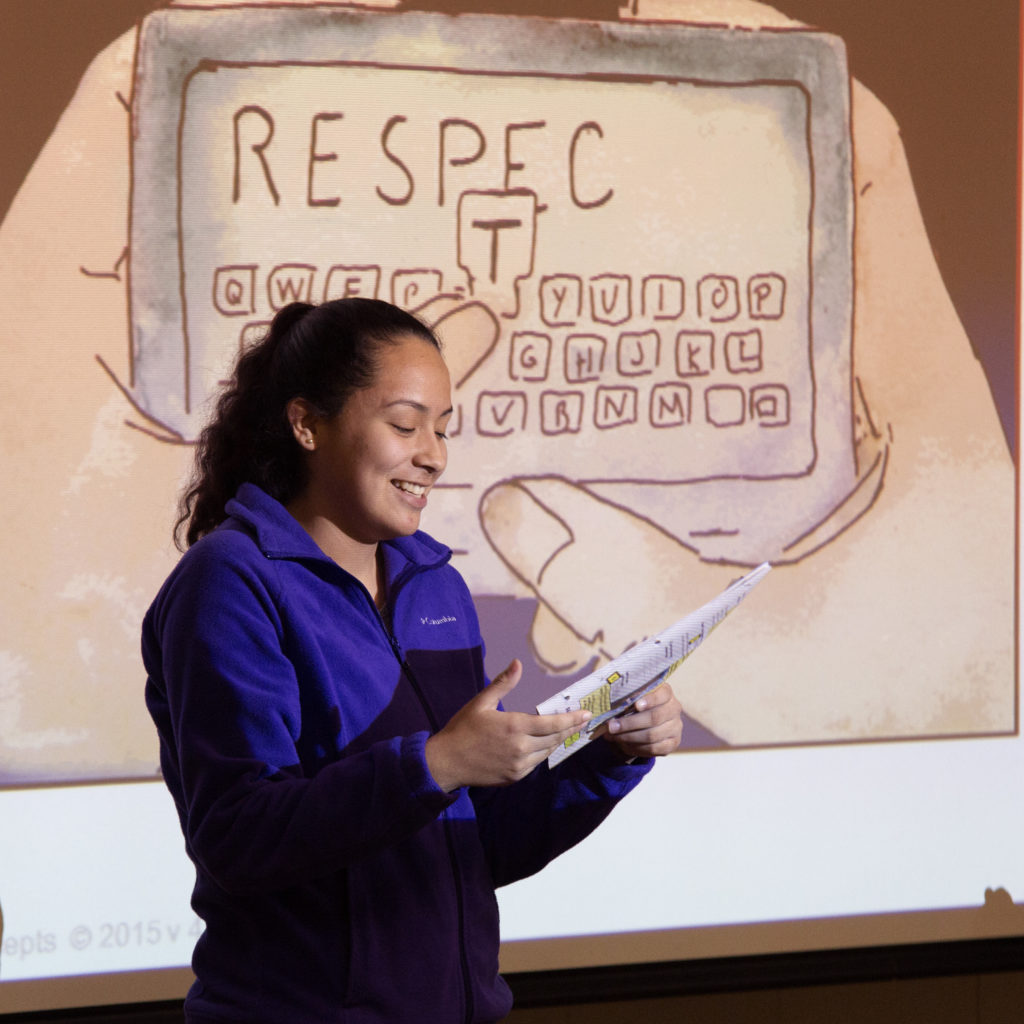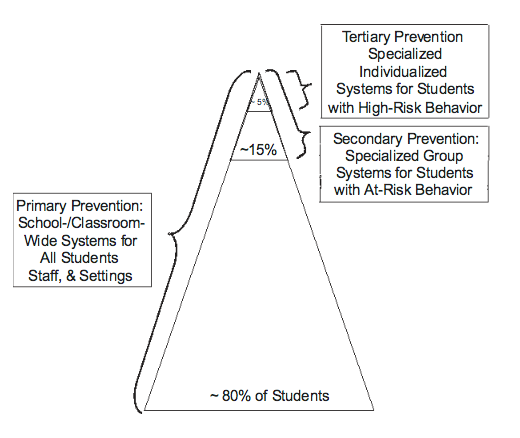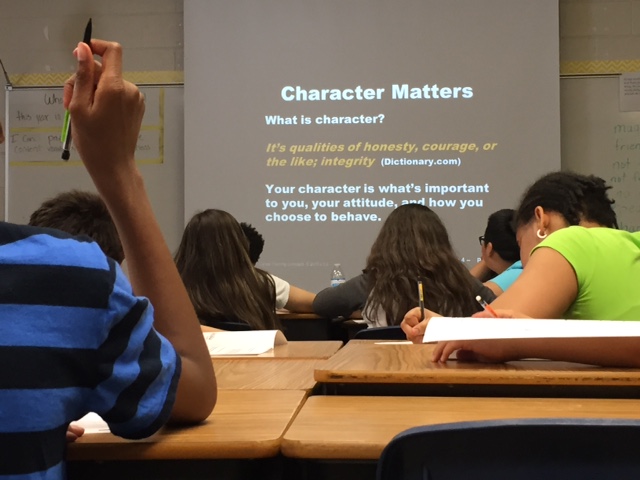The time that school professionals spend teaching children is valuable. So many work every day to promote positive academic and social-emotional outcomes for all children. In return, they anticipate that children are motivated to fully engage in every opportunity to learn and grow while they happily continue to follow their dreams of shaping the future of children.
*Cue the scratching record sound.* What? Not all children are learning and growing to their potential? And problem behaviors in schools, such as bullying, are disrupting the intention of school professionals to provide a safe learning environment for children? What about the positive academic and social-emotional outcomes that we envision for all children? In a recent HEAR blog post, Learning with the Burdens of Bullying, we pointed out how, “Bullying creates an unwelcome atmosphere where students may develop low self-esteem and feel afraid, depressed, lonely, shame, anxious, worried and unmotivated with a negative view of school, so of course, bullying may lead to missed opportunities to learn (and thus, low achievement).” For that reason, a substantial number of K-12 schools across the country are taking back valuable teaching and learning time by implementing School-Wide Positive Behavior Interventions and Supports (SWPBIS; Bradshaw, Mitchell, & Leaf, 2010). HEAR – Helping Everyone Achieve Respect – is a tool that can help with this approach.

A high school student leads a HEAR workshop and talks with a group of 8th grade students about what it means to be respectful to others.
SWPBIS, also known as PBIS, is a research-validated systematic framework that schools use for promoting students’ positive behaviors while preventing or decreasing problem behaviors (Sugai & Horner, 2002). SWPBIS is an alternative approach for disciplining students’ behaviors in contrast to traditional methods of punishing students with punitive or zero tolerance approaches. Educators in SWPBIS schools use data to understand why students misbehave and help them learn to replace negative actions with prosocial or positive actions. They explicitly teach, reinforce, and monitor positive behavior, in order to create an environment that continuously fosters expected behaviors in all areas of the school – not just the classroom. These efforts can have a great impact on fostering a positive school climate. In fact, SWPBIS schools report decreases in their students’ problem behaviors (Barret, Bradshaw, & Lewis-Palmer, 2008; Horner et al., 2009; Lewis, Sugai, & Colvin, 1998; Sprague et al., 2001) even over time (Bradshaw et al., 2010).

Figure 1: Continuum of School Wide Positive Behavior Interventions and Supports,
In SWPBIS, there are three levels of behavioral support (i.e., primary, secondary, and tertiary tiers) that address the increasing intensity of student’s needs (Sugai & Horner, 2002). (See Figure 1).
Tier 1 interventions are intended to address the needs of all students. Schools use Tier 1 interventions to educate and reinforce behavioral expectations (e.g., students will be respectful, responsible, safe, and ready to learn). Schools become predictable environments for students. Approximately 80% of students in schools respond to Tier 1, or universal support (Sugai & Horner, 2002). Secondary or Tier 2 prevention targets about 15% of students who aren’t responding to primary prevention, and as a result are considered “at-risk.” The strategies used in Tier 2 increase protective factors and minimize risk factors. Tertiary prevention (i.e., Tier 3) requires individualized attention to reduce the severity of a student’s problem behaviors (Sugai & Horner, 2002). Knowing the 3 levels of behavioral support that frame the SWPBIS process can help us understand how and where HEAR fits on the continuum of interventions and supports.

In a HEAR presentation, students learn that the way we choose to behave matters.
Disrespectful behaviors, including bullying, certainly reduces the likelihood for having a positive school climate. Within a SWPBIS framework, these examples of problem behaviors are addressed at all levels (Swearer Wang, Collins, Strawhun, & Fluke, 2014; Waasdorp, Bradshaw, & Leaf, 2012). HEAR is one of many tools to consider using as a Tier 1 anti-bullying intervention along with additional Tier 1, 2, and 3 anti-bullying interventions (Swearer et al., 2014).
HEAR for Middle Schools and HEAR for High Schools were developed by experts on bullying from Harvard University and The University of Nebraska–Lincoln. HEAR is an anti-bullying workshop that challenges students to engage in both respectful behavior toward theirs peers and active bullying intervention. HEAR consists of a 50-minute interactive classroom workshop in which the following topics are covered in detail: how to show respect, how to recognize bullying, how to understand its consequences, and strategies for minimizing bullying and enhancing respectful behavior. The workshop provides students with opportunities to brainstorm, speak, listen, read, and write about bullying. In addition, HEAR includes a student commitment banner, follow-up activities to reinforce learning, a student survey that provides schools with useful data, and an informative website with practical tools for teachers, students and parents.
The HEAR Student Survey data show that 88% of students say the presentation positively influences their commitment to respecting and including others. The concepts and prosocial skills taught in HEAR can improve teaching and learning for all, making it particularly timely as schools across the nation continue to implement SWPBIS.
For more information about SWPBIS, visit www.pbis.org, a website of the Technical Assistance Center on Positive Behavioral Interventions and Supports. The website was established by the U.S. Department of Education’s Office of Special Education Programs.
As your school plans to optimize instructional time and the well-being of all students, we also invite you to schedule HEAR through our website, www.project-hear.us.
We want to thank our special guest blogger, Allen G. Garcia. Allen is a school psychology doctoral student at the University of Nebraska-Lincoln. In between his studies and work as a graduate assistant at the Buros Center for Testing , Allen collaborated with our team to share this valuable information with our HEAR audience.
Resources
Barrett, S. B., Bradshaw, C. P., & Lewis-Palmer, T. (2008). Maryland statewide PBIS initiative systems, evaluation, and next steps. Journal of Positive Behavior Interventions, 10, 105-114.
Bradshaw, C. P., Mitchell, M. M., & Leaf, P. J. (2010). Examining the effects of school wide positive behavioral interventions and supports on student outcomes results from a randomized controlled effectiveness trial in elementary schools. Journal of Positive Behavior Interventions, 12, 133-148.
Bradshaw, C. P., Reinke, W. M., Brown, L. D., Bevans, K. B., & Leaf, P. J. (2008). Implementation of school-wide positive behavioral interventions and supports (PBIS) in elementary schools: Observations from a randomized trial. Education and Treatment of Children, 31, 1-26.
Horner, R. H., Sugai, G., Smolkowski, K., Eber, L., Nakasato, J., Todd, A. W., & Esperanza, J. (2009). A randomized, wait-list controlled effectiveness trial assessing school-wide positive behavior support in elementary schools. Journal of Positive Behavior Interventions, 11, 133-144.
Lewis, T. J., Sugai, G., & Colvin, G. (1998). Reducing problem behavior through a school-wide system of effective behavioral support: Investigation of a school-wide social skills training program and contextual interventions. School Psychology Review, 27, 446-459.
Sugai, G., & Horner, R. (2002). The evolution of discipline practices: School-wide positive behavior supports. Child & Family Behavior Therapy, 24, 23-50.
Swearer, S. M., Wang, C., Collins, A., Strawhun, J., & Fluke, S. (2014). Bullying: A school mental health perspective. In M. D. Weist, N. A. Lever, C.P. Bradshaw, & J.S Owens (Eds.), Handbook of school mental health (2nd ed., pp. 341-354). doi:10.1007/978-1-4614-7624-5_25
Waasdorp, T. E., Bradshaw, C. P., & Leaf, P. J. (2012). The impact of schoolwide positive behavioral interventions and supports on bullying and peer rejection: A randomized controlled effectiveness trial. Archives of pediatrics & adolescent medicine, 166, 149.
